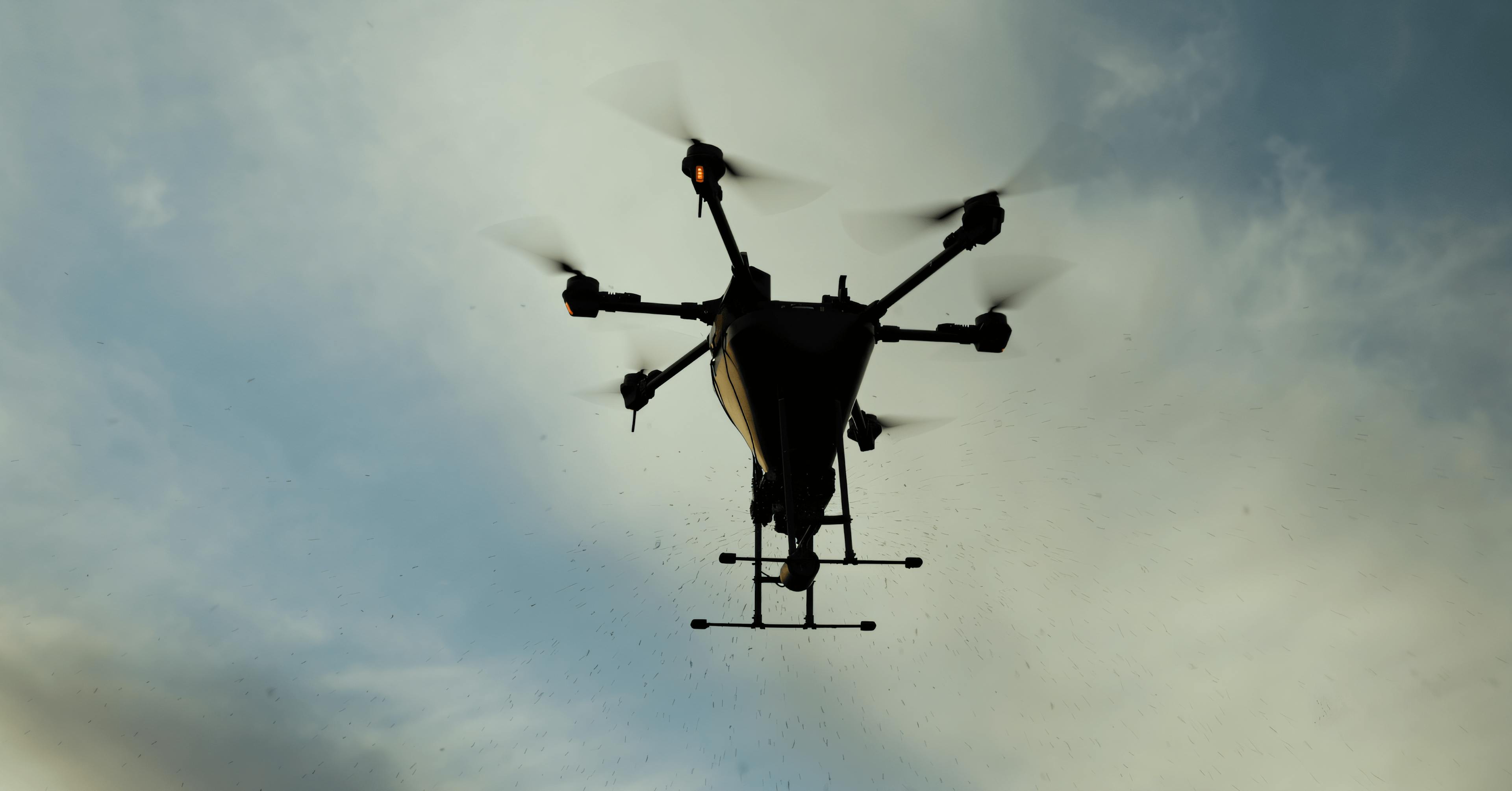7 ways Dendra Aerial Seeding Gives Nature a Helping Hand

Restoration Taking Flight with Mechanical Wings.
Imagine a flock of birds gliding over a vast expanse carefully dropping seeds across the land to let life take root below. That’s the essence of modern drone seeding - a modern approach that draws its inspiration from nature itself by biomimicing birds. By combining technology with ecological insights, Dendras has pioneered a remarkable technology: a faster, safer, and more efficient way to restore habitats and rehabilitate degraded environments.
In this blog post, we’ll explore how Dendra’s patented aerial seeding technology brings seven unique advantages to the table. We’ve gathered them into three sections, each highlighting a fresh perspective on drone seeding’s game-changing power.
Big Lifts, Quick Coverage, and Safer Groundwork
One major reason drone seeding is catching on is its capacity. Picture this: a drone loaded with a 12kg payload, ready to drop enough seeds to cover a hectare in under five minutes. That larger “wingspan” of capability puts it a step above off-the-shelf options that often need constant refilling. With fewer interruptions, entire teams can stay focused on the bigger-picture goal - spreading vegetation to every meter of the land that needs it.
Of course, size is nothing without speed. These drone fleets can zip along at 25 km/h, covering ground that would take heavy machinery days to traverse. Instead of bulldozers churning up dust clouds and disturbing the soil, drones rapidly fly above the surface, scattering seeds with a graceful efficiency. And because they create a uniform seed “swath” as they fly, the final distribution is even and consistent. It’s akin to how a well-organized flock of birds collectively covers new feeding grounds: quick, agile, and effective.
Yet even with speed and capacity, none of it matters if the approach isn’t safe. Traditional bulldozer seeding is tough on operators, who have to contend with remote risk-prone areas, high operating temperatures, and the chance of overturning on steep slopes. By contrast, drone pilots handle their work from a safe vantage point, often far from precarious terrain or hazardous particles. Imagine shifting the planting process from inside a noisy dozer to simply monitoring a flight dashboard. That’s a powerful switch, reducing both physical stress and the risks that come with heavy machinery.

Quality in Every Seed, Flexibility for Every Project
Now, let’s talk about what actually matters most in any restoration effort: quality. Drone seeding stands apart because each flight is calibrated for precise seed rates. There’s no guesswork and minimal downtime. Picture the difference between scattering a handful of seeds by hand in the wind, hoping they land in the right spot, versus carefully measuring out the perfect dose for a homogeneous spread. One is well-intentioned but imprecise; the other is methodical and consistent. With drone seeding, you know every pass puts seeds of the right native ecosystem design exactly where they belong, thanks to digital flight planning and calibrated spreaders.
That same attention to detail also leads us to versatility. Each ecosystem is unique, requiring different seed types, shapes, or coatings to thrive. With modular, easily adjustable components, drone spreaders can handle specimens from hard-coated seeds (think native shrubs or tougher grasses) to delicate wildflower mixes that bring biodiversity back into balance. It’s like having the adaptability of different bird species in one synchronized flock, some that sow seeds in wetlands, others that carry them across dry plains, except here, you control which seeds go where.

Weather Resilience and Minimal Waste
Some might worry about storms, muddy fields, or scorching heat, but drones are surprisingly nimble. Right after a heavy rain, for example, the ground is primed with moisture - ideal for fresh seedlings to take root. Yet that same weather might halt a bulldozer for days. By contrast, a drone can be deployed almost instantly, swooping in to capitalize on perfect soil conditions with minimal fuss or delay. Weather becomes less of a stoppage and more of an opportunity.
Finally, there’s the simple fact that drone seeding helps you minimize losses. When seeds are expensive and every little grain counts, it makes sense to distribute them with pinpoint accuracy. Sophisticated sensors track when the hopper is getting low and even guide the drone back to the exact spot it left off, so no patch goes unseeded. It’s a neat, data-driven way to ensure nothing gets wasted.
A New Chapter in Restoration
When you combine large payloads, rapid speed, and safer operations with high-quality dispersal, versatile seed handling, all-weather resilience, and minimal waste, it’s clear that drone seeding isn’t just a novelty, it’s a blueprint for more effective restoration. Much like birds charting migration paths, these drones follow carefully plotted routes, sowing new life where it’s needed most.
The heart of the story is simple: technology and ecology can work in harmony. By harnessing drones for seeding, we mimic nature’s own lessons - agile, adaptive, and efficient - while unlocking a level of precision and speed that no single flock of birds could match. In that sense, drone seeding isn’t replacing nature; rather, it builds on natural processes, strategically placing seeds to maximize their chances of growth and long-term ecosystem success.